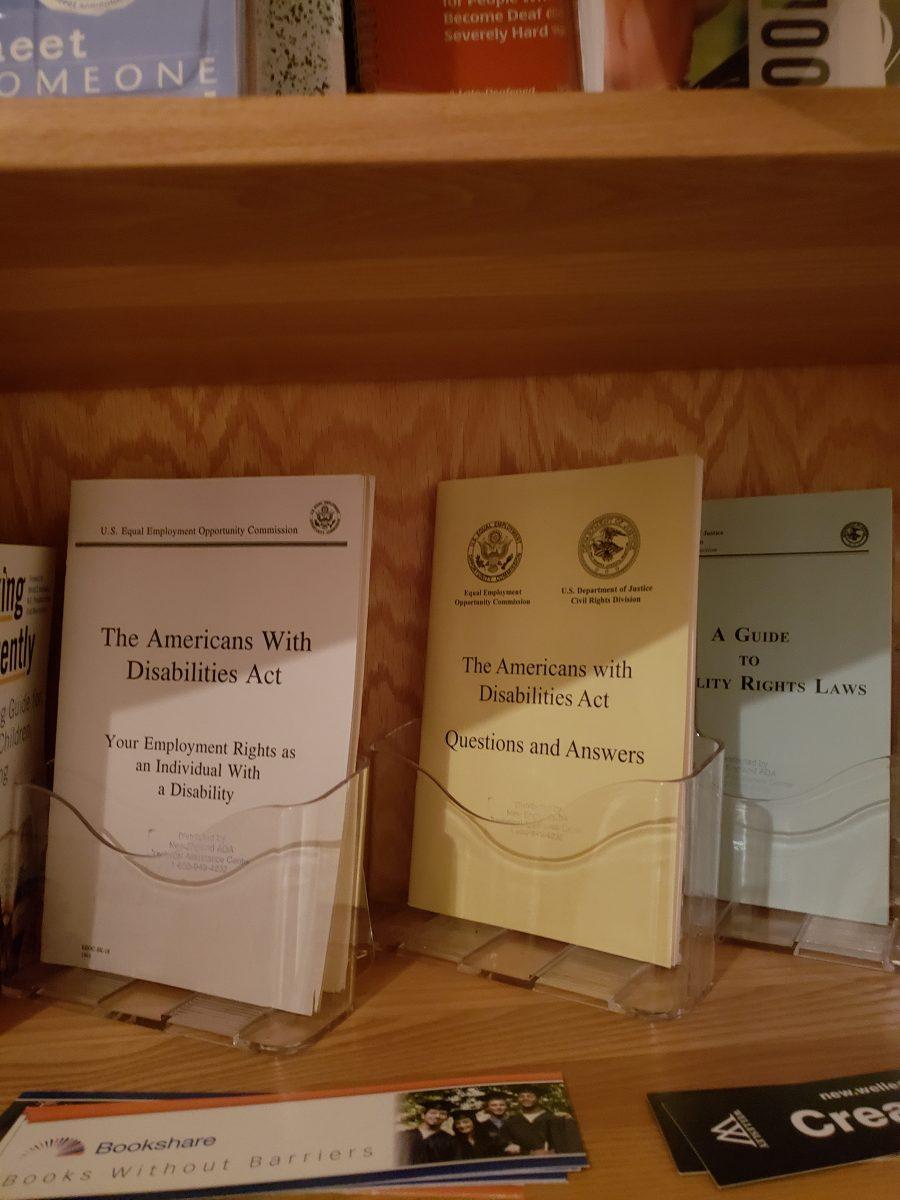For several years, there has been no major advocacy organization for disabled, neurodivergent and/or chronically ill students at Wellesley. The issue of inaccessibility, and of a lack of spaces in which to talk about it, prompted Calista Bullitt ’21 and Margaux Delaney ’20 to come together and found Students for an Accessible Wellesley (SAW), an organization centered around creating disabled community, expanding the conversation around disability and taking action.
In founding the organization, Bullitt was inspired in part by what they felt was missing from student leader training.
“I noticed that sessions on disability during our training fell short. As someone who suffers from chronic pain and mental illness, the short, optional disability training was very jarring and worrisome,” they said. “And then I started noticing more and more how our buildings are inaccessible. It wasn’t until I met Margaux at community organizing training … that I realized I could help do something.”
Delaney, for her part, felt that one of the most important aspects lacking from existing resources for disabled students was a way to support and connect with other disabled community members.
“I think the resources around disability and mental illness at this college are very oriented on the individual,” she said. “Individual self-care and what you personally can do for yourself, which is super important, but I think what’s lost is how we can support one another and have a sense of community that fixes those feelings of isolation that I think a lot of disabled students on this campus have.”
Delaney added that she felt frustrated with the lack of resources on campus that were necessary for her and for students with similar needs.
“The things that I could get [from the Stone Center] were not exactly what I needed. I’m trying to fill that need,” she said.
Alexa Mathisen ’21, a member of SAW, agreed that isolation of disabled students is a problem.
“I want to get a student community for people with disabilities, one which I feel like is lacking at Wellesley,” she said. “I want to find others who are going through similar things I am and how they’re handling and navigating that at Wellesley.”
While offering critical services, existing organizations like the Balance Health Educators (BHEs) and Active Minds provide resources mainly for mentally ill and neurodivergent students rather than physically disabled and chronically ill students. These organizations also focus more on day-to-day student self-management than on advocacy. Some students, like Shannon Mewes ’19, have also noted issues with accessibility on campus, with no preexisting space to talk about those issues or advocate against them.
“I sprained my ankle on the same day the Beebe elevator broke. It stayed out of order for two weeks, and for nearly the whole duration I had to crutch up and down several flights of stairs every day because I lived on the fourth floor,” said Mewes. “It was painful and demoralizing, and this was just an injury [rather than a long-term physical disability]. The inaccessibility built into this campus hasn’t gone anywhere.”
Both Delaney and Bullitt highly praise the work Director of Disability Services Jim Wice does every day with disabled students, but note that he can only do so much.
“Jim Wice is one person, and he can’t do everything,” said Delaney. “So I think if students can come together and fill those needs, then that would be really valuable.”
Additionally, not all students are aware of the resources that exist on campus for those with disabilities.
“Jim Wice, who is an incredible resource for our campus, can only have so many one-on-one meetings with students to point out resources,” said Bullitt. “I think the administration should be providing and advertising those resources better.”
SAW is a brand-new organization, having just chosen their name last week at their first meeting, which was advertised simply as an open meeting on disability at Wellesley on Nov. 6. However, while the organization may be in the very early stages of its formation, it already has a thriving membership. Seven people showed up to the first meeting, and seven more who could not make it asked to be added to the mailing list.
“I was very afraid that turnout would be low,” said Bullitt, “but we had quite a few people and even more that emailed about asking to be put on the mailing list. The conversations [at the meeting] were good, I think we’re really on the same page on how we want to provide a community but also advocate for that community.”
In addition to naming the organization and choosing the three main principles on which it would be founded — community, expanding the conversation and taking action — SAW’s first meeting was productive. Members came up with three action items they plan to pursue: creating scripts for professors and organization leaders related to disability and accommodations, running a poster campaign to call attention to inaccessible spaces on campus and compiling lists of accessibility resources into resource sheets for students to use.
The organization’s next meeting is this Thursday, Nov. 15 at 7 p.m. in the Pomeroy living room. Members will work more on the aforementioned action items.






